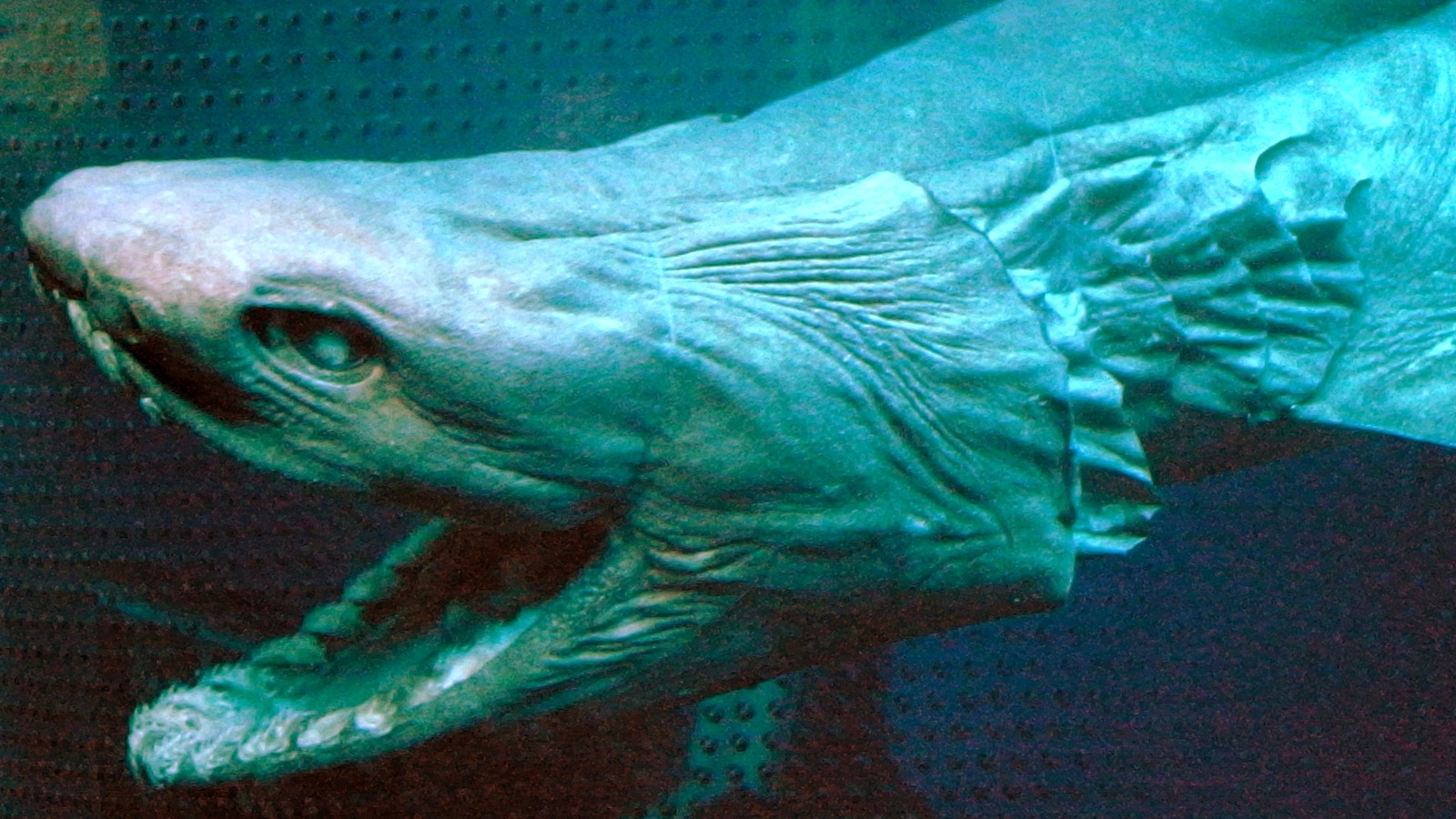📣 For more lifestyle news, click here to join our WhatsApp Channel and also follow us on Instagram
Know all about the lizard shark that lived alongside dinosaurs
This species belongs to one of the most ancient branches of the shark lineage. It dates back around 80 million years, making it a true survivor from the time when dinosaurs dominated land.
 The frilled shark dwells in the deep ocean, often near the seabed, making human encounters exceedingly rare. (Source: Wikimedia Commons)
The frilled shark dwells in the deep ocean, often near the seabed, making human encounters exceedingly rare. (Source: Wikimedia Commons)Prepare to be fascinated by a rare, eel-like predator dubbed the “lizard shark.” This prehistoric creature, officially known as the frilled shark (Chlamydoselachus anguineus), has existed largely unchanged since the Cretaceous period, meaning it has literally swum alongside dinosaurs.
The frilled shark has been swimming in the deep ocean for millions of years and is one of the most primitive sharks alive today. Known for its uncanny eel-like body, frilly gill slits, and rows of needle-sharp teeth, it earns its nickname “lizard shark” due to its shark ancestry combined with reptilian features.
This species belongs to one of the most ancient branches of the shark lineage. It dates back around 80 million years, making it a true survivor from the time when dinosaurs dominated land.
 Frilled sharks are widely but patchily distributed, with sightings reported off shores of Norway, Japan, New Zealand, Chile, South Africa, and more (Source: Wikimedia Commons)
Frilled sharks are widely but patchily distributed, with sightings reported off shores of Norway, Japan, New Zealand, Chile, South Africa, and more (Source: Wikimedia Commons)
With an eel-like elongated body and six pairs of frilled gill slits, its head is broad and flat, ending in a short snout, and its mouth sits at the very front of the head, rather than below. The jaw boasts around 300 needle-like, trident-shaped teeth arranged in 19–29 rows in the upper jaw and 21–29 in the lower. These sharp teeth serve both to lure prey in and to firmly grasp it; some scientists suggest the bright white teeth may mimic bioluminescent lures in the deep sea, according to the Shark Research Institute.
Deep-sea dwellers through and through, frilled sharks prefer continental slopes and deep-sea floors, dwelling anywhere from 50 m to 1,500 m (160–4,900 ft) in various global oceans. Despite their benthic nature, they engage in diel vertical migration, swimming toward the surface at night to hunt squid, fish, and even other sharks. Their snake-like hunting involves curling their tail around a substrate and lunging forward with flexible jaws to engulf prey whole.
Frilled sharks are widely but patchily distributed, with sightings reported off shores of Norway, Japan, New Zealand, Chile, South Africa, and more. A rare and significant find was a male frilled shark caught near Chiloé Island, Chile, in 2014 extending known range of the species southward by about 850 km. This specimen contributes valuable data to the still-shrouded biology of this species.
📣 For more lifestyle news, click here to join our WhatsApp Channel and also follow us on Instagram



- 01
- 02
- 03
- 04
- 05
























